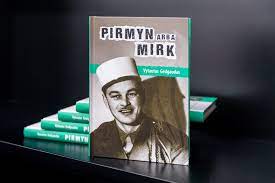
On October 19, Vytautas Gedgaudas‘s book, Pirmyn arba mirk (Forward, or Die), was presented at the National Library of Lithuania.
Jolanta Mažylė, Associate Professor of the Centre for Journalism and Media Studies at Vilnius University and the winner of the Gedgaudas Prize, is to blame that the articles written by a long-time editor-in-chief of the Lithuanian-American newspaper, Dirva, the only Lithuanian accredited to the Paris Peace Conference and the only Lithuanian journalist who wrote about the Nuremberg Trials for the Lithuanian American press, finally made into a book. The author of the book has managed to preserve an exceptional testimony of WWII, which will find its place among the memoirs of Lithuanian soldiers who served in foreign armies.
The book consists of three parts. The first and second parts contain Gedgaudas’s texts about the Foreign Legion in which he served during WWII. Mažylė believes that the third part of the book, which contains Gedgaudas’s articles published in Lithuanian American press after he immigrated to the United States of America, will be a revelation not only for readers but also for scholars of journalism and cultural history. The book is illustrated with photographs taken by Gedgaudas himself.



